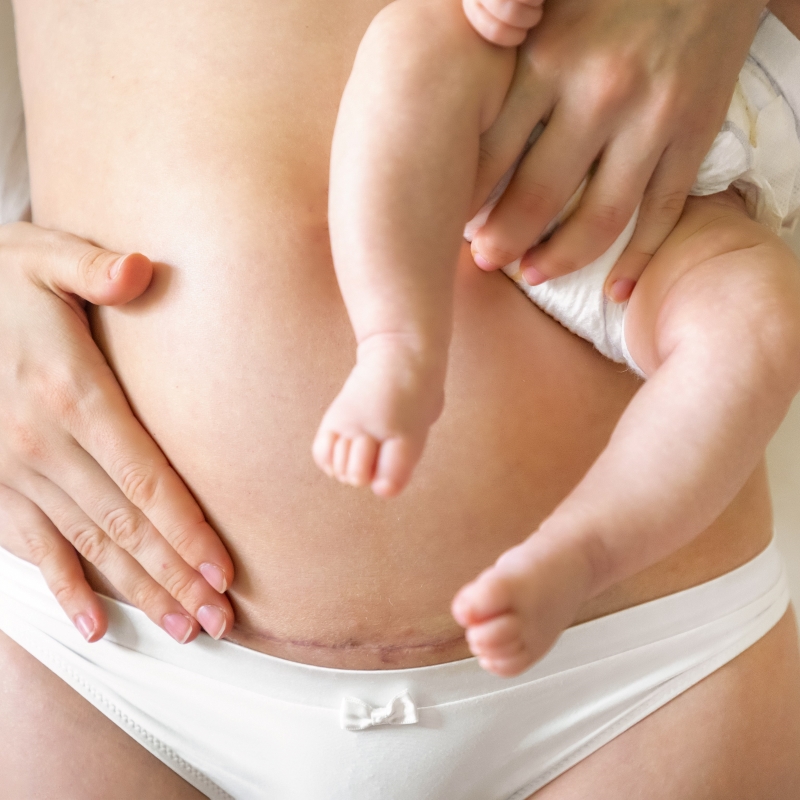
When pregnant women hear the word cesarean, fear can build up not knowing what to expect. Here, we explain why you might need one and what to expect during the procedure.
Why You Might Need a C-Section
Your OB/GYN might need to perform a scheduled or unscheduled C-section, depending on the health of you and your baby. Some, but not all, reasons to need a scheduled C-section include:
- An illness or congenital condition in your baby that might make delivering vaginally more difficult.
- If your baby is too large to move safely through the birth canal
- If your baby is in the breech position and can’t be moved
- You’re having triplets or more
- Placentia previa, or when the placenta is blocking the cervical opening or abruptio placenta, when it has separated from the uterine wall.
- If you develop pre-eclampsia, which is pregnancy-induced high blood pressure, and treatment isn’t working.
In addition to these situations, your doctor might decide that the safest route for you and your baby is an unscheduled C-section. This might happen if you were laboring normally in the early stages of labor and then quit progressing, or if you or your baby start showing signs of distress or have other complications.
What to Expect During the C-Section Procedure
One of the first things to happen before a C-section is anesthesia. This is usually either an epidural or spinal block so the lower half of your body is numb but you will remain awake. Next, you will be prepped by shaving your abdomen and pubic hair in the area of the incision, and and the operating room staff will insert a catheter into your bladder. They’ll also place sterile drapes on your stomach to cover the actual incision. Once you’re completely numb, the doctor will make a horizontal incision about the length of your middle finger just above your pubic hair line. Then, the doctor makes another incision in the lower part of your uterus, and you will probably feel a fair amount of tugging as the operating room staff move your baby into position so that the doctor can safely and gently pull your baby’s head out.
Next, the umbilical cord is cut and the surgeon removes your placenta, followed by the process of stitching you back up, starting with your uterus then the outer layers and skin are realigned and stitched back up either with dissolving stitches or staples. Most new Moms rarely notice this part however, as they’re bonding with their newest addition to the family.
Watch this short video from the Mayo Clinic to see what to expect during a C-section procedure. (Please note: Certain parts of this video are graphic).
After a C-Section
Women can expect many of the same symptoms during the recovery from a C-section as they would have from a vaginal delivery, including afterpains as your uterus contracts, postpartum bleeding, discomfort in the perinal area, and exhaustion. On the second day, they will remove the catheter, and you’ll be able to try and walk around and go to the bathroom. The typical hospital stay for a C-section is 3-4 days so the hospital staff can effectively monitor you post-surgery. After two weeks, you will have a follow-up appointment with your doctor to check the incision, and at six weeks you’ll have a postpartum visit.
Communicating With Your Doctor
If you’re concerned about having a C-section delivery, talk to your doctor or midwife about your labor preferences and have a clear plan in place. Discuss any concerns about your pregnancy that might affect your ability to deliver vaginally and talk to your doctor about your thoughts on C-section. By having an open dialogue during your last few prenatal visits, you can be sure you’re on the same page to providing the best care for you and your little one.


